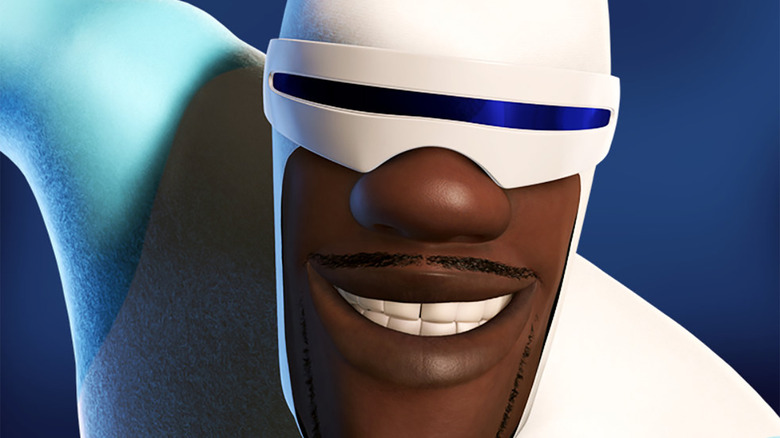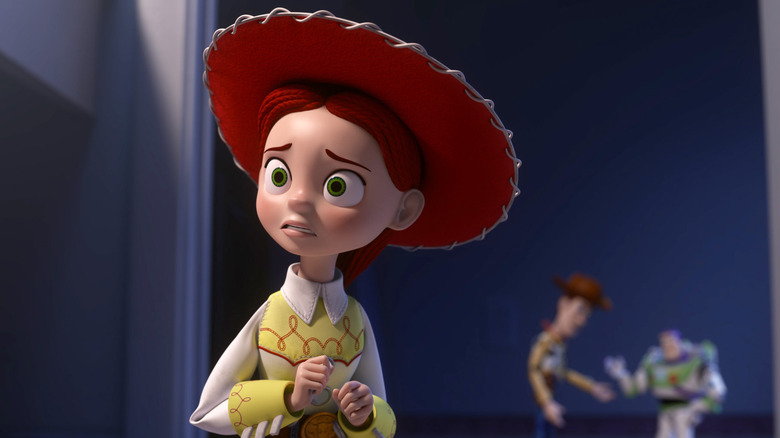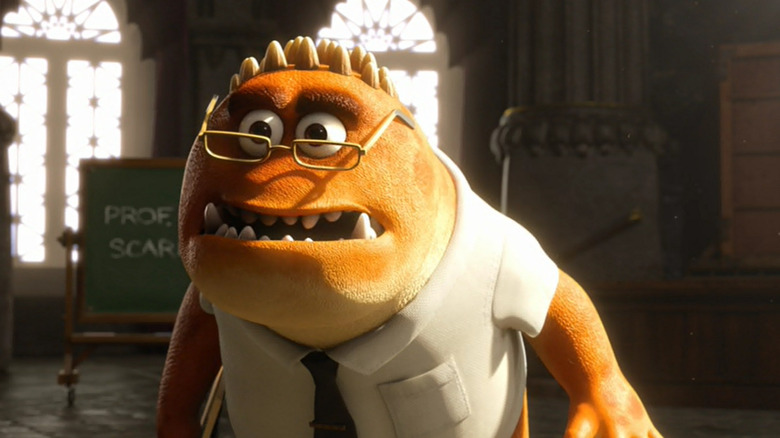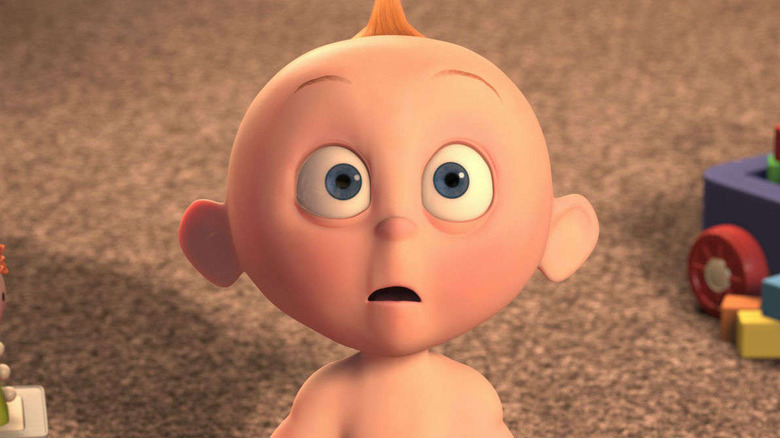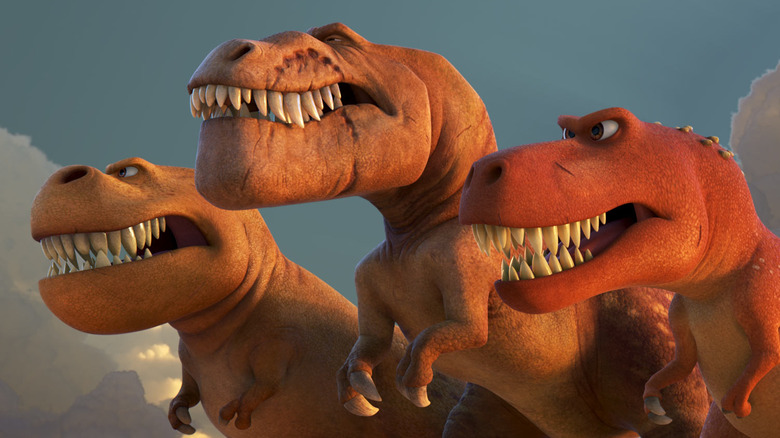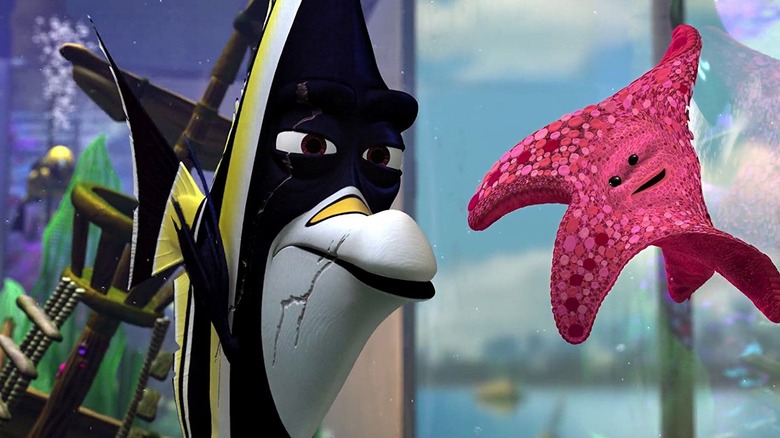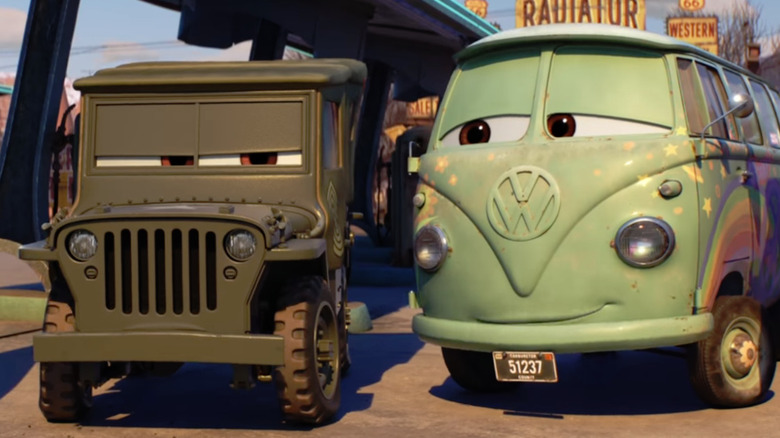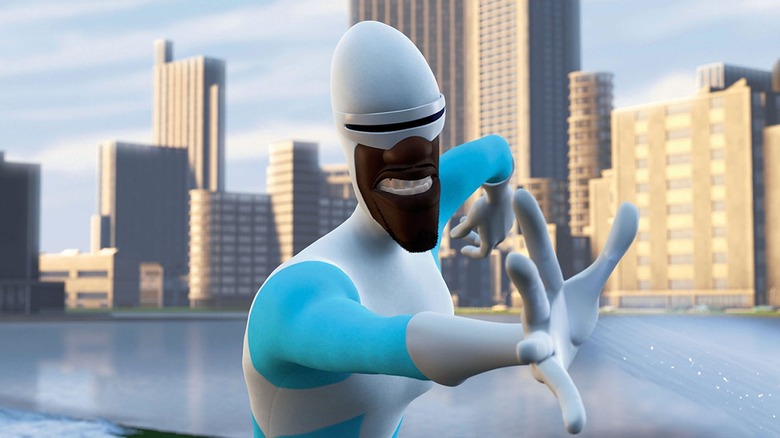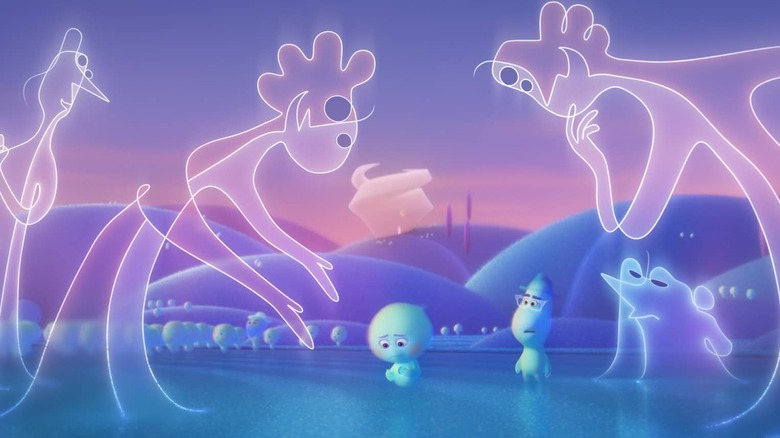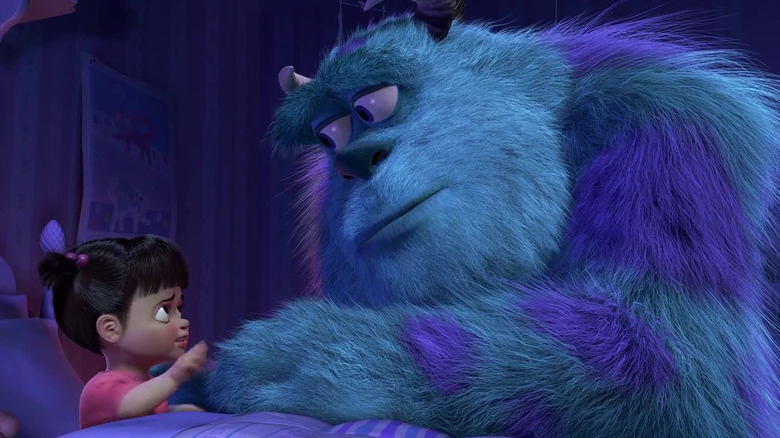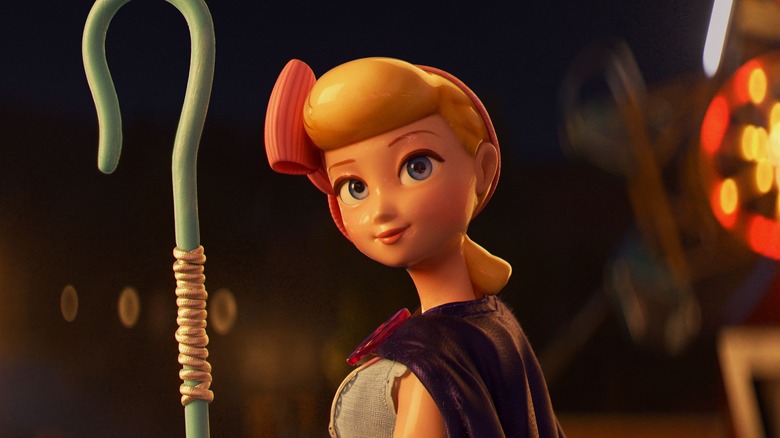Pixar Supporting Characters Who Deserve Their Own Movie
In the house of Pixar, character is key. For over 25 years, the most reliable studio in animation has dazzled and devastated audiences with its profound understanding of character-driven storytelling. No one would care about these talking toys, blue-collar monsters, or middle-aged superheroes if they weren't full of motivation, depth, and thematic growth. We don't love Buzz Lightyear because he looks cool and has a famous catchphrase; we love him because he dwells in existential misery before learning to accept his identity as a child's plaything, teaching all of us that it's okay if it takes a while to discover who you truly are.
But the leads aren't the only compelling parts of a Pixar joint. Each one of the studio's imaginative films is bursting with memorable and lovable characters, some of whom are so well-developed that they could easily take the spotlight and carry a story all of their own. Whether they're old favorites or forgotten players, all of the following Pixar characters have protagonist potential.
Jessie
Despite her plasticine origins, Jessie is one of the most authentically human characters on Pixar's roster. Behind her fiery spirit and her signature "YAY-haw!" lies a lot of trauma, including a crippling fear of abandonment and a bad case of claustrophobia. After years of brilliant characterization (and a starring role in the 2013 TV special "Toy Story of Terror!"), Jessie has proven that she has enough depth and room for growth to substantiate a feature-length adventure. But it won't be easy; turning Jessie's post-traumatic stress into a bog-standard character arc would be incredibly childish and more than a little insensitive.
Instead, Pixar could take a more nuanced (and controversial) route by re-introducing Emily, the girl who originally abandoned the lovable cowgirl. Jessie would bear witness to a much different Emily than the little girl she loved so much. Rather than "getting over" her trauma, Jessie would learn a much more painful lesson: Even though the person who once left her behind returns, her baggage doesn't just magically disappear. Jessie would come to understand that the version of the loved ones we keep in our memories no longer exist, and may never again – it's that special "Toy Story" flavor of utter emotional devastation.
Derek Knight
"Monsters University" took audiences back in time to the titular academy and, in depicting the rivalry-turned-friendship between Mike and Sully, recontextualized scaring children as not simply an occupation but an art form. The craft has enough social and educational clout to merit a prestigious and highly competitive college program. What Pixar may not have intended, however, is how the college prequel put a "freshman 15" on the original film's ending. The events of "Monsters, Inc." resulted in a complete upheaval of the "Monsters" world. Scaring as a source of renewable energy was out, and making kids laugh was in — but what does that mean for a world in which frightening children was so revered?
Enter Derek Knight, an esteemed professor at Monster University's scare program and one of the many monsters that "Monsters, Inc." rendered unnecessary overnight. In his own show, Professor Knight could navigate a changed Monstropolis, grappling with an enemy that strikes fear into the hearts of even the most terrifying employees at Monsters, Inc.: obsolescence. Knight's journey for a renewed purpose would fit nicely with Pixar's existential themes and could provide a thoughtful meditation on the toxic tendencies behind cultural traditions. Besides, who'd ever object to a feature-length Alfred Molina performance?
Jack-Jack
Fittingly enough, one of Pixar's more underappreciated qualities is what goes unsaid in each of its films. Pete Docter and the gang don't just know what to say, but also what not to say, and as fun as fan theories can be (in moderation), we ultimately don't need to know why toys come to life or how the monsters are able to travel to the human world through closet doors. But what if prioritizing character over lore was part of a person's journey? A question feverishly debated among fans of "The Incredibles" is the indescribable power within Jack-Jack Parr, the youngest member of the super-family. He's teleported, duplicated himself, transformed into metal and monsters, and more. What kind of super is this kid, anyway?
A Jack-Jack film might take place many years after the previous two — even as a teenager, no one can figure out the youngest Incredible's abilities. But instead of creating a character arc that would lead to a definitive answer, Jack's journey could instead meditate on the lack of one. Sometimes, the qualities and quirks that define a person can't be neatly categorized or pigeon-holed, and even though Jack feels pressured to define himself as a member of a world-renowned team, he must learn that he doesn't need to fully understand himself to accept who he is.
The T-Rex family
It ain't easy being "The Good Dinosaur." Pixar's take on one of the most popular nerdy fixations ranks among the most disliked films in its catalog, thanks to a lightweight story and a distracting lack of originality. Even so, there is still fun to be had at Clawtooth Mountain. Aside from a few minor subplots, Pixar has never told a story about a father and his daughter. The T-Rex family that Arlo meets on his journey — old man Butch and his daughter Ramsey, specifically — provides a solid framework by which the studio could change that.
In our proposed feature, a dino from Butch's past ambushes the Longhorn ranch and mortally wounds Nash, sending a grieving Butch on a quest for revenge. Ramsey, shaken by her father's callousness, catches up to him and is quickly introduced to the parts of her father's life never told around a campfire. One of the biggest indicators of adulthood is being able to acknowledge that your parents had lives, history, and baggage long before they had children. Ramsey could face that rocky reality, while Butch would have to realize that opening up to his daughter is the only way he can keep his family together.
Gill and the Tank Gang
There are few Pixar characters done dirtier than Gill and "Tank Gang." Though Gill and his crew were supposed to be a prominent part of "Finding Dory," their subplot was cut and they were delegated to a paltry post-credits gag. Their absence was sorely felt throughout the movie. Justice must be served — it's time for Pixar to answer Bloat's recurring question: "Now what?"
After escaping captivity (again) and reaching the ocean floor, Gill and the tank gang might travel the seas in search of a new home. It's a simple scenario, but the Pixar-style twist is that it doesn't end happily. As the fish cruise through the ocean, each member finds a place where they could prosper as individuals, but reject them to stay with the group in hopes that maybe, just maybe, they'll find a home that pleases everybody. Gill would ultimately realize that, as much as he loves his group of misfits, sometimes the right thing to do as a leader is to disband and say goodbye.
Sarge and Fillmore
A defining coming-of-age moment in the 21st century is realizing that most (but not all) Pixar stories are told with opposing pairs. Woody and Buzz. Marlin and Dory. Joy and Sadness. When heads butt, conflict comes naturally, breeding believable character development. One of Pixar's more obvious pairings is Lightning McQueen and Mater from 2006's "Cars"; one's a hotshot hotrod from the racing circuit, the other's a humble blue-collar worker in the boonies.
Among the many faces Lightning meets in Radiator Springs, two gas-guzzling layabouts stand out: Sarge, a short-tempered jeep war veteran, and Fillmore, a free-loving '60s Volkswagen Type 2 who listens to Jimi Hendrix. Together, they embody the political divide of America in the late '60s, representing those who went to war in Vietnam and those who opposed it.
Though they were never integral to the movies that feature them, the counterculture and countermeasure cars have been known to clash over petty affairs. Pairing these two and giving them a shared goal would result in an enjoyable cross-country adventure, heavy on transparent political metaphor (another "Cars" staple). With their playful banter and bickering, Sarge and Fillmore could explore new parts of their wacky world and bring the essence of Emeryville's finest to the forefront.
Frozone
Lucius Best has always felt like the odd man out in the "Incredibles" series, a super man in blue surrounded by a family in red. In fact, it's arguable his most obvious function in the franchise is to remind audiences that Bob, Helen, Violet, Dash, and Jack-Jack aren't the only superheroes around. Though that's extremely limiting for one of Pixar's only Black characters, Frozone could also serve as an anchor to introduce the wider super community.
Frozone's tale might be a step back in time, taking place days before the passing of the Superhero Relocation Act outlawed supers. With their life's work on the line, Lucius and the greater community of supers attempt to do as much good as they can while they still retain legal standing, ensuring their absence is felt as little as possible. If the original "Incredibles" is "Watchmen" for kids, Frozone's film would be closer to a youth-oriented "The Big Short" — what would you do if you knew your world was days away from falling apart? Frozone's tale would be about leaving a life behind while also serving as a spectacular showcase for the dozens of supers once adored by the public, including Gazerbeam, Dynaguy, and the Thrilling Three.
The Jerry Council
Pixar wasn't playing around when it finally decided to stop dancing around death in 2020. "Soul" didn't simply kill off main character Joe Gardner within the first 30 minutes of the movie, it brought him to a fully-realized (and deeply secular) version of Purgatory. Joe was introduced to the guardians of this pastel paradise, abstract beings of light who take on humanoid features and warm voices to interact with young souls on their way to Earth, as well as influential souls headed to the "Great Beyond." They all go by the same name: Jerry.
Pixar is frighteningly good at crafting rich, textured worlds, and the Great Before from "Soul" is no exception. A movie outlining its creation would be wholly unnecessary. What would make more sense would be a story exploring the motivations behind these ethereal escorts, either as a prequel set in a Great Beginning or a sequel featuring a whole new batch of characters. Why do the Jerrys choose to believe in humanity? Were they ambivalent in the past? If so, what changed their minds? The Jerrys' belief in people could be both challenged and reinforced in this abstract spinoff.
Boo
Between a scrapped sequel and a so-so streaming series, Disney has done its damndest to create the next chapter of 2001's "Monsters, Inc.," Pixar's first truly subversive work. By contrast, the animation studio was more successful in turning the clock backward with an excellent prequel, "Monsters University." What these productions all have in common is, ironically, a missing ingredient: the heart and soul of the original film, Boo. Though her guardians are the lovable faces of the franchise, Boo was the unassuming agent of chaos that brought Monstropolis to its knees — like an adorable Steve Rogers, her very presence brought out the corruption buried beneath the monsters' world.
But bringing Boo back for her own film wouldn't work if the goal was simply a walk down memory lane. Taking place decades after the fall of Henry J. Waternoose III, Boo's grand return to Monsters, Incorporated could depict her as a new mother, forced to venture back through the closet door after her toddler goes missing. With fresh adult eyes, Boo would finally come to understand the world she changed so many years before. But Boo wouldn't just accept the monstrous circumstances; after all, making children laugh to harvest energy doesn't necessarily change the professional relationship between monsters and children. Is the world of "Monsters, Inc." truly as symbiotic as it seems? The first adult human to discover Monstropolis would likely have some heated words for her "Kitty."
Bo Peep
Pixar's toybox is absolutely bursting with well-developed characters, but none have grown and changed as profoundly as Bo Peep from "Toy Story." Once merely a passive voice of reason (and Woody's girlfriend), little Bo stood on the sidelines during the first two films before taking a sabbatical for round three. Though she was sorely missed during the toys' move to Bonnie's room (and the many mini-adventures that came after), the "Toy Story" icon made a big comeback in 2019's "Toy Story 4" as a hero to the lost and abandoned playthings of her RV park domain.
Bo's role as a fiery do-gooder felt like a calculated move on Pixar's part to pitch audiences on a new action hero, and though she may not have taken off as her own character after the film's mega-success, she still made enough of an impression to earn her own animated short, "Lamp Life," which chronicled the life and times of the lady light's journey across the world. Charming as it was, the short frustratingly filled in the gaps that could've been saved for a feature-length vehicle, relegating her growth to cute gags instead of real character development. With nowhere to go but forward, Bo's adventures on her own would be a refreshing deviation from such a storied franchise.
